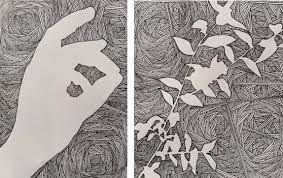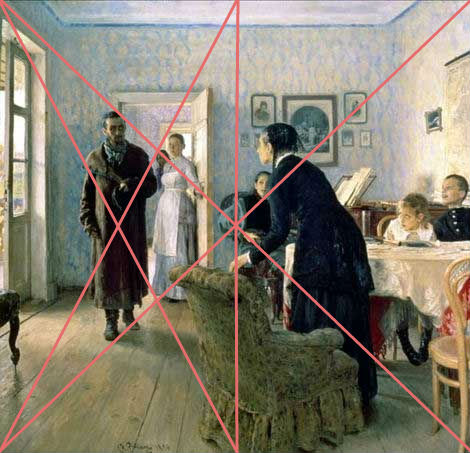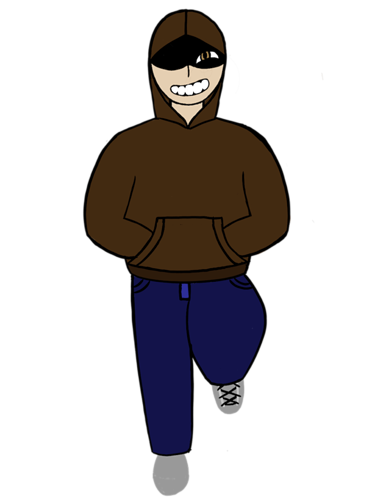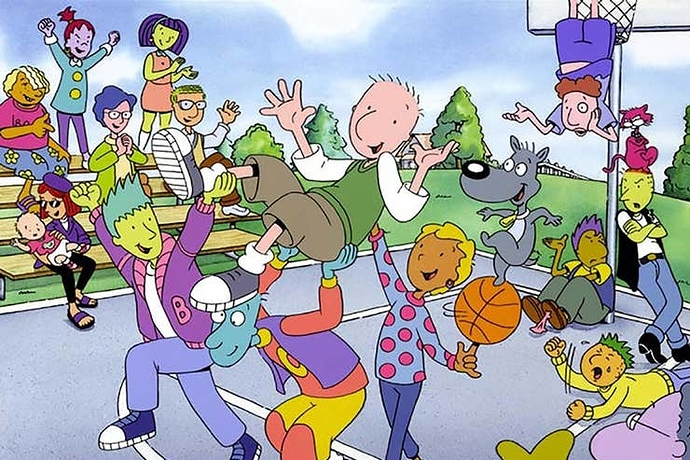That’s darker, desaturated is closer to gray than closer to black if that makes sense.
The line in the middle shows what saturation means. I’m not trying to imply you need to make all your colors muddy and gray, but making most of them a bit more desaturated except for small areas you want to really pop will definitely help achieve art that is a little easier on the eyes (sometimes you do want bright colors though, I don’t know when these times are as they depend on you, though)
You say that by comparing yourself your work is "noticeably worse" and yet you cannot point out one single thing about what it is what you dislike about it? Have you tried then asking what are the things that you like about other people's work? Why you consider them "noticeably better"?
If you cannot make a good use to comparison nor make it a tool for your own benefit, then you'll need to stop comparing yourself to others since it's only autosabotage and just a way to discourage yourself and making you hate your work and current abilities more.
The internet is vast, whatever you wanna learn to later incorporate in your work is there, coloring technique, color theory, lightning and shadows, textures, prespective, depth, anatomy, different styles, even drawing in traditional instead of digital or mixing both techniques, or even more methods, etc.
Creativity is not only having ideas about what to draw, but as well the innovation of solving problems, but you won't be able to use creativity if you don't nurture yourself, Creativity requires knowledge, learning and studying so you can later apply it to anything you're struggling with and as well, creativity strikes when you're already working, instead of hoping that others gives you concrete answers to questions that you can't even give a proper shape (And even if you did, there aren't always answers that are 2+2=4).
I actually found the saturation setting on my drawing app and turned the saturation down, and that's how I got the colors I did. Like I turned this setting all the way down and it turned a solid grey color. Turning it darker doesn't actually make the colors less vibrant in my opinion, and instead he looks like he has the same colors on his body, but in a darker room.
I am not sure what to say about your style because I am not sure what direction you want to go in. The first one looks like Doug
Which has a more cartoony and “rubber hose” look.
Cartoon, anime, realism, etc. whatever style you are going for, it doesn’t hurt to study anatomy and do gesture drawings. There is a saying “you have to know the rules before you break them”.
I would also recommend just experimenting with a bunch of different styles. Good practice is drawing your characters in other people’s style. It will help you see the little details that goes into someone’s style and sort of makes you look at things from a different perspective.
I also would recommend pushing yourself out of your comfort zone. This does go hand in hand with experimenting but I am also asking you to draw things like hands and shoes and other things like that. The only way I got better at drawing hands was forcing myself to draw them.
That is called still life. That is the start of fundamentals. You will learn pressure control, perspective, lighting, and arm/wrist movement. That's where you start. You can't just go straight to more advance art not having a foundation or you will just learn mistakes and reinforce them by repeating them. Patience. No one learned to draw well in a year or two, it takes decades.
Life drawing can sound lame and boring at first, but what you're doing is learning to see the subject and recognize details and apply them to a drawing. These are super important skills as a good basis for drawing. You will be able to apply this skill to figure drawing, coloring, gestures, lighting, etc, all sorts of things as you level up as an artist. The more you do stuff like this, you'll see vast improvements in your art. Like many other people said, it takes a lifetime of learning and nonstop practice. Even professionals at the top of their craft still practice life drawing to keep their basic skills sharp. You can't build a solid house on an unstable base.
I am aware of what a still life is. But the way the class assigns them I don't think they're very helpful. I don't feel any better at drawing than I was at the start of the class, and drawing the negative space of a chair felt like a waste of time to be since it wasn't connected to anything else. I don't feel like the still life's made me any better at shading and value than I was before drawing them either, and even if they did I mostly draw digital art.
The point of negative space drawings are forcing your brain to look at things from a different perspective. Most beginners tend to just see and draw things as outlines but struggle when it comes to making those outlines look right. Negetive space has you look at shapes and the shapes within forms.

Like if you struggle with hands, knowing negative space can help with this. Instead of seeing it as this complex thing, you are seeing it simply as a shape.
That's because the teacher is trying to train your brain to observe the world and see how objects are placed in a space. It also helps you learn about composition lines which can help with observation. If you start doing complex shading to a drawing with bad composition, it's not going to look right.
Ok, I'm going to treat you like an adult as I don't know what age you are. If you are taking a still life drawing class and you are not getting better, that is on you. There is only two reasons. One: you think you have already learn about the stuff in class and have nothing more to learn from the class set-up. This means you just need to push yourself and ignore the class. Work on what you need to work on. Unless you are drawing photo realistic art, you can still learn. Two: The teacher isn't teaching correctly. This is a hard one as it's very easy to blame some one else for you not learning. But ask questions. See where you are weak and ask the teacher to help fix it. It's their job. Be the best in your class, blow away the teacher with how awesome you are. Go above and beyond.
My point is you need to just sit down and draw in a formal setting. Stop drawing character like the above. You are not at a point that is going to help you. Your form needs work. A class gives you a structure to learn how to draw as you work on things in a set progression. Drawing is not talent, it's a skill. Skills need to be learned.
Honestly, and I know this goes against what a lot of people are saying, I don't think you necessarily have to go through all of traditional drawing training to be good at drawing anything. Now, that does depend on what you want to draw, like if you want to draw almost perfectly realistic or semi realistic people it would be helpful to learn how to draw the folds of fabric and measure facial proportions like would be taught in a still life class.
Personally, I've been drawing for quite a few years and have only started taking classes within the last year. I think that the still life classes certainly helped me, particularly with backgrounds, but I think I was able to find my style beforehand. The only thing I could say about your drawings right now is they feel like you don't have a specific style in mind so they don't look confident. But that's something only practice will fix. Experimenting until you find what you like to draw should come first in my mind. While knowing how to draw realistically is nice, if someone wants to draw very stylized, I don't think they absolutely need to know how to draw a still life first.



